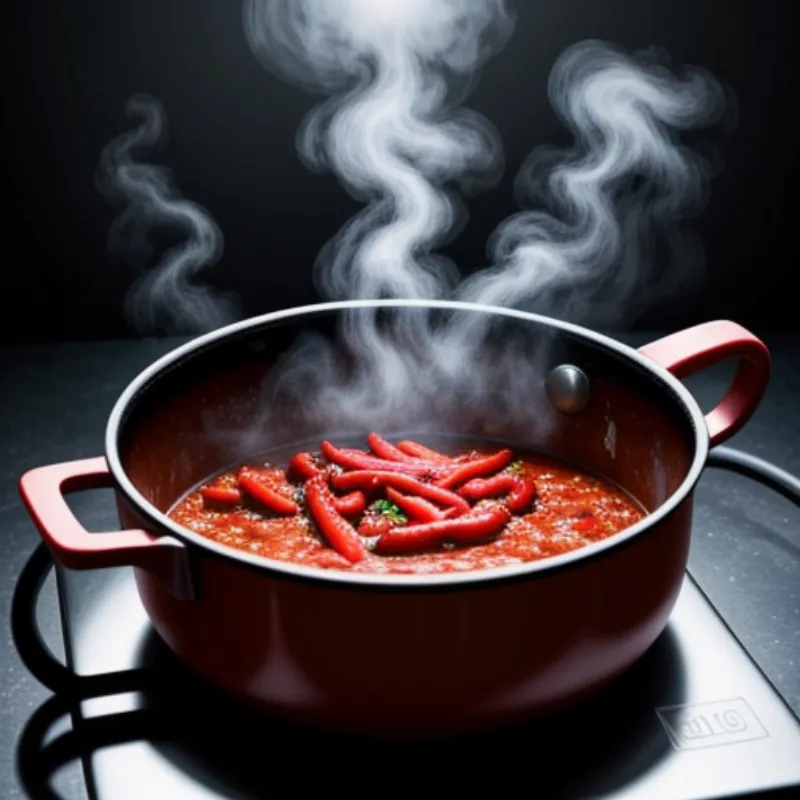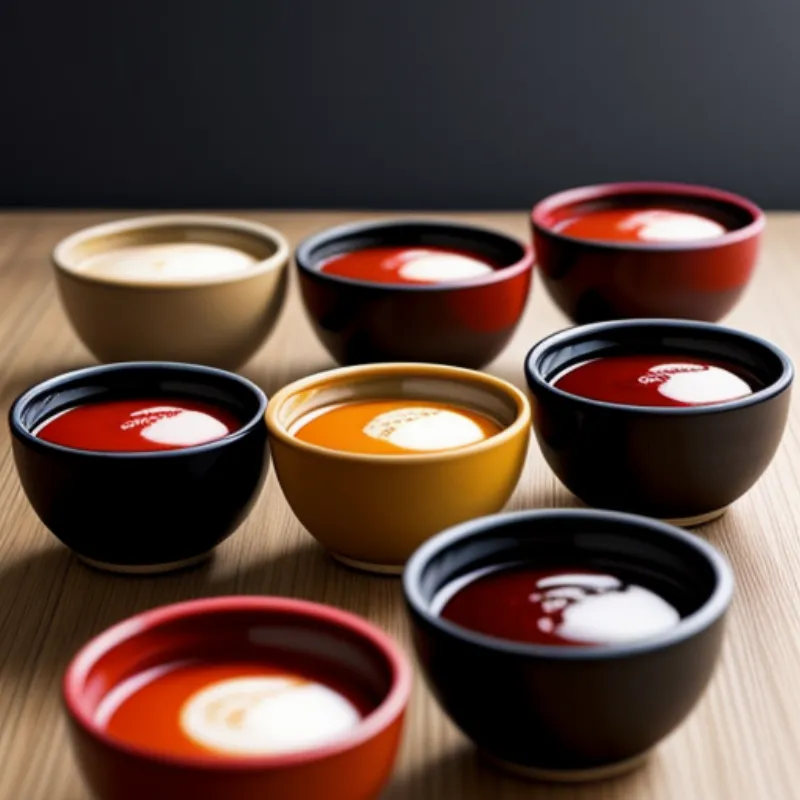Chili sauce – the mere mention of it conjures up images of vibrant red hues, tantalizing aromas, and a fiery kick that awakens the palate. Whether you’re a seasoned spice enthusiast or a curious newbie looking to add some excitement to your meals, knowing How To Make Chili Sauce at home is a game-changer.
This comprehensive guide will walk you through the steps of crafting your own batch of homemade chili sauce, empowering you to control the heat and customize the flavors to your liking. Get ready to unleash your inner chef and discover the magic of chili sauce!
The Allure of Chili Sauce: A Culinary Journey
Before we dive into the recipe, let’s take a moment to appreciate the fascinating world of chili sauces. From the tangy Sriracha to the smoky chipotle, these condiments have graced tables and tantalized taste buds for centuries.
“Chili sauces hold a special place in culinary history,” says renowned food historian Dr. Sarah Jenkins, “They represent a fusion of cultures and flavors, each region adding its unique touch to create the diverse range of chili sauces we know and love today.”
Indeed, the beauty of chili sauce lies in its versatility. It can be used as a dipping sauce, a marinade, or a condiment, adding depth and complexity to an array of dishes.
Homemade Chili Sauce: A Symphony of Flavor
This recipe focuses on a classic chili sauce that balances heat, sweetness, and tanginess. Feel free to adjust the ingredients to suit your taste preferences.
Ingredients: Your Flavor Palette
Main Ingredients:
- 1 pound fresh red chili peppers (such as Fresno, jalapeño, or serrano), stems removed
- 1 cup white vinegar
- 1/2 cup water
- 4 cloves garlic, peeled and roughly chopped
Flavor Enhancers:
- 1 teaspoon salt
- 1 tablespoon sugar (adjust to your desired sweetness)
- 1/2 teaspoon ground cumin (optional, for earthy notes)
Choosing Your Chilis:
“The type of chili pepper you choose will significantly impact the flavor profile of your sauce,” advises Chef Michael Carter, author of “The Spicy Food Lover’s Cookbook.” “For a milder heat, opt for jalapeños. If you prefer a fiery kick, habaneros or ghost peppers are excellent choices. Remember to wear gloves when handling hot peppers!”
Equipment: Your Culinary Tools
- Large pot
- Blender or food processor
- Rubber gloves (for handling chili peppers)
- Jar or container for storage
Instructions: Crafting Your Chili Masterpiece
- Prepare the Chilis: Wash and dry the chili peppers thoroughly. If desired, you can remove the seeds for a milder sauce.
- Blend the Ingredients: Combine the chili peppers, vinegar, water, garlic, salt, sugar, and cumin (if using) in a blender or food processor. Blend until a smooth paste is formed.
- Simmer and Thicken: Pour the chili paste into a large pot and bring it to a simmer over medium heat. Reduce the heat to low and let it cook for about 15-20 minutes, or until the sauce has thickened to your liking. Stir occasionally to prevent sticking.
- Taste and Adjust: Once the sauce has thickened, carefully taste it (using a small spoon) and adjust the seasonings as needed. Add more sugar for sweetness, salt for a savory kick, or vinegar for tanginess.
- Cool and Store: Allow the chili sauce to cool completely before transferring it to a sterilized jar or container. Store in the refrigerator for up to 2 weeks.
Pro Tip: “For a smoother sauce, strain the mixture through a fine-mesh sieve after blending,” suggests Chef Michael Carter. “This step will remove any remaining chili pepper skins or seeds.”
 Chili Sauce Simmering
Chili Sauce Simmering
FAQs: Addressing Your Chili Sauce Queries
Q: Can I use dried chili peppers instead of fresh ones?
A: Absolutely! If using dried chilis, rehydrate them in hot water for about 30 minutes before blending. Adjust the amount of water in the recipe accordingly.
Q: My chili sauce is too spicy! What can I do?
A: Don’t worry, it happens! You can tone down the heat by adding a bit of sugar, honey, or even a splash of coconut milk.
Q: Can I freeze my homemade chili sauce?
A: Yes, chili sauce freezes well. Pour it into freezer-safe containers, leaving some headspace for expansion, and freeze for up to 3 months. Thaw overnight in the refrigerator before using.
Serving Suggestions: Unleashing the Flavor Fusion
Now that you have your very own homemade chili sauce, it’s time to put it to good use! Here are a few ideas to get you started:
- Dipping Sauce: Serve it alongside spring rolls, dumplings, or your favorite appetizers.
- Condiment: Add a dollop to noodles, rice dishes, tacos, or burgers for an extra kick.
- Marinade: Marinate chicken, tofu, or vegetables in chili sauce for added flavor and tenderness.
Exploring the World of Chili Sauces:
Looking to expand your chili sauce repertoire? Check out these other fantastic recipes:
- How to Make Sambal Daun Jeruk: A fragrant Indonesian chili sauce with lime leaves.
- How to Make Sweet Chili Dressing: A versatile dressing that’s perfect for salads, noodles, and more.
- How to Make Lao Gan Ma Chili Sauce: A flavorful Chinese chili sauce with crispy chili flakes.
 Chili Sauce Variety
Chili Sauce Variety
Conclusion: Embrace the Heat!
Making your own chili sauce is a rewarding culinary adventure that allows you to tailor the flavors to your exact preferences. With this comprehensive guide and a dash of culinary creativity, you’ll be well on your way to creating chili sauces that will impress your taste buds and elevate your meals.
So, go ahead, embrace the heat, and let your inner chili master shine! Don’t forget to share your culinary creations and chili sauce stories in the comments below. We can’t wait to hear about your spicy adventures!
